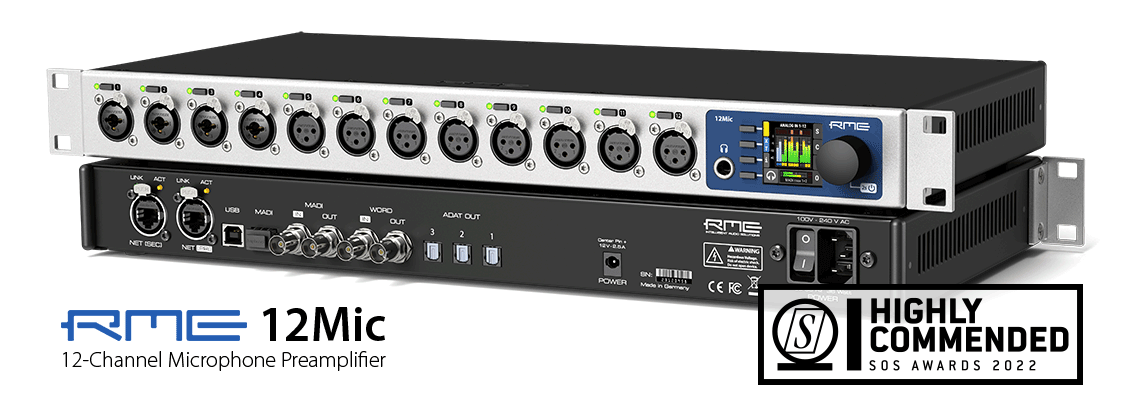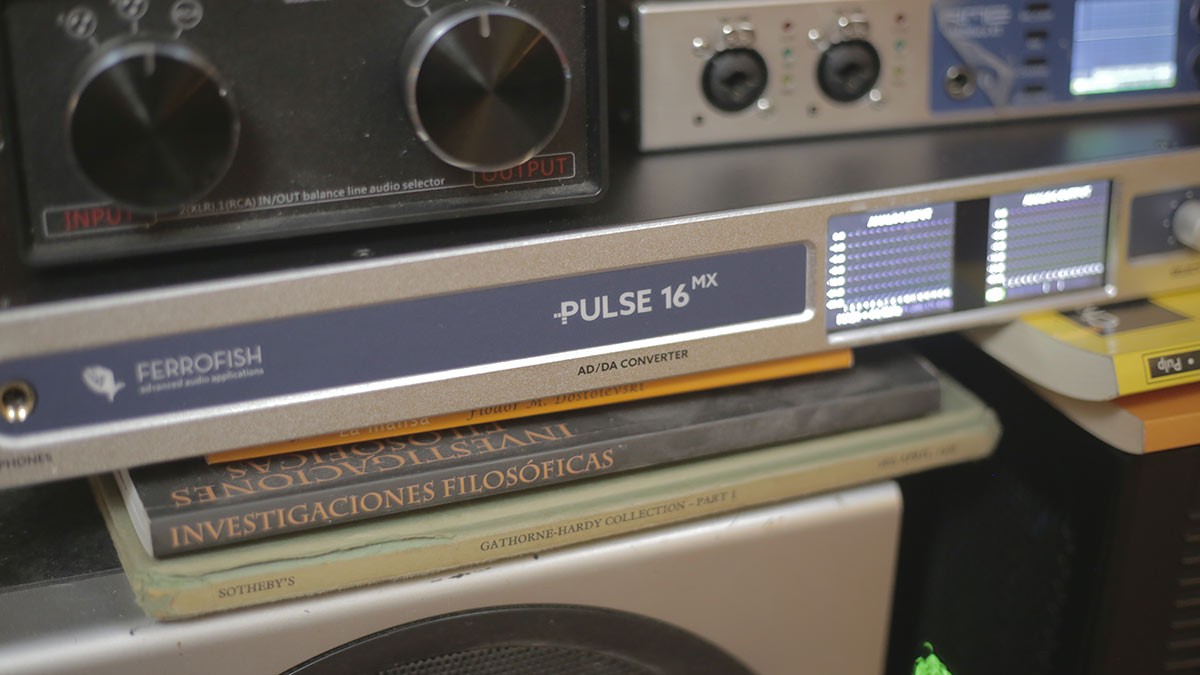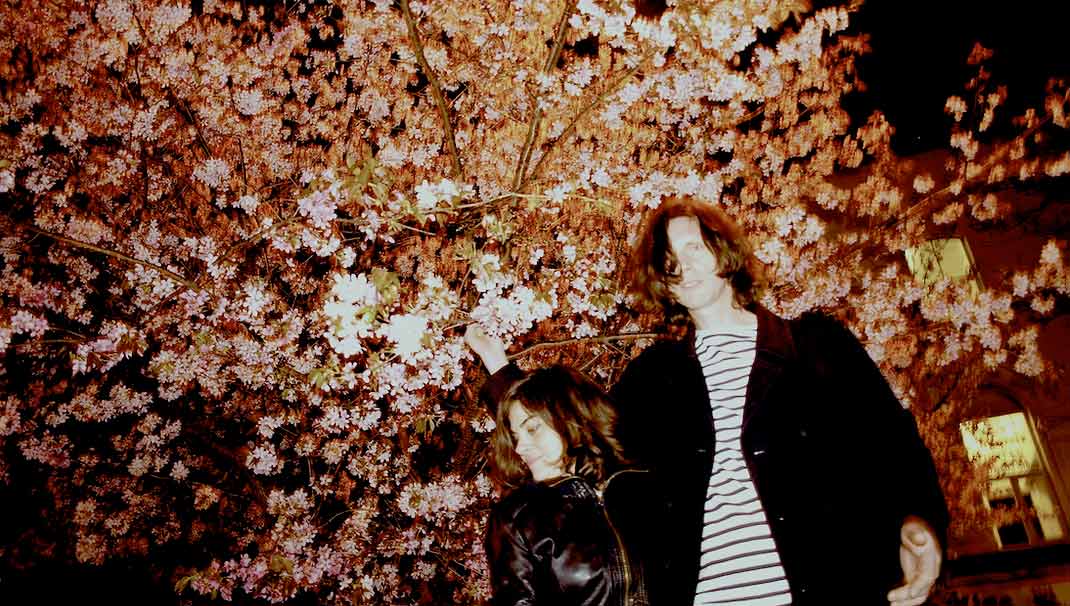 We chat to Audio-Visual artists Strange Pill about turning their London home into a recording studio with RME and Ferrofish!
We chat to Audio-Visual artists Strange Pill about turning their London home into a recording studio with RME and Ferrofish!
Audio-Visual artists Ben Hardy and Zahara Muñoz-Vicens have been embracing the analogue and digital realms together since 2009.
Primarily working under the name Strange Pill, the duo combines music and field recordings with video and other technologies to create experimental mixed-media collages, blurring the lines between musical performance and interactive art show.
Exploring and documenting the stories behind recorded material, their work incorporates looping and live performance cut-ups, video projections, holograms, ‘moving paintings’, and interactive elements via touch-screen.
As recording engineers and music producers, Strange Pill have collaborated with hundreds of vocalists, musicians and spoken word artists, alongside international names like Trevor Horn and the New York Philharmonic orchestra, and have exhibited at galleries and performing arts centres including the Barbican Centre, York Art Gallery, Richmix, The Vaults, Cairo Palace of Arts and Joldwynds.
We caught up with Strange Pill in their London home to find out more about their latest project – turning their entire house into a recording studio – with a recording setup that includes the RME 12Mic and the Ferrofish Pulse 16 MX.
RME 12Mic: Turning a House into a Recording Studio with Strange Pill (video)
See more videos at Synthax TV
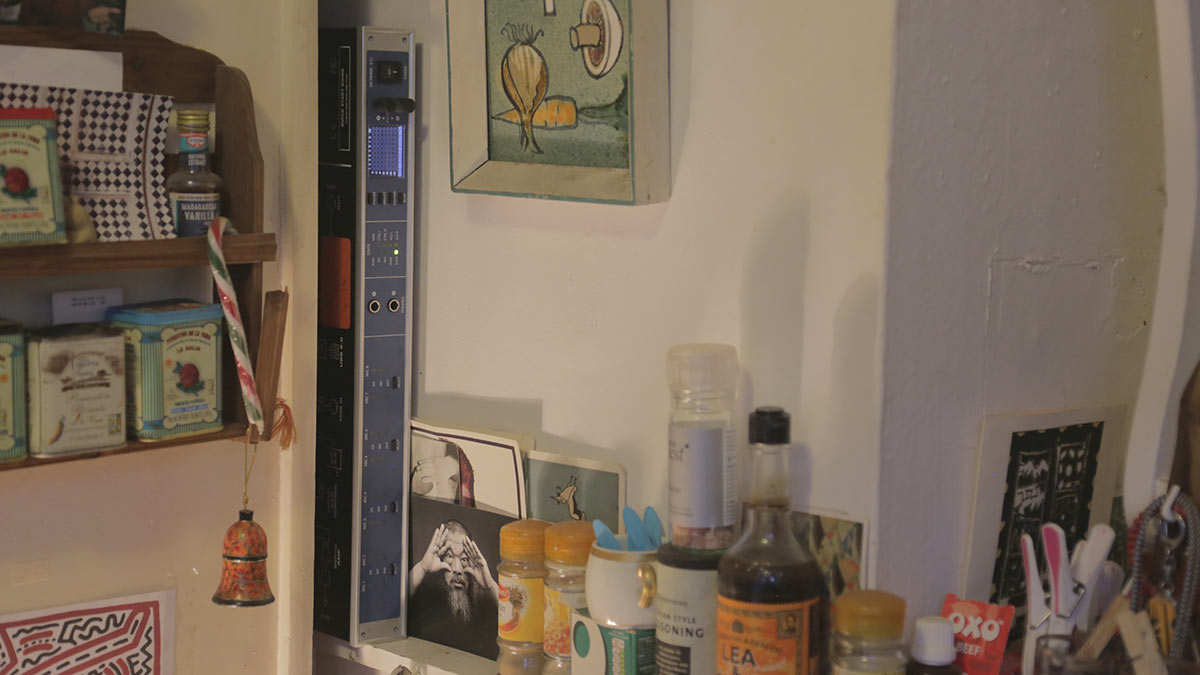 Turning a house into a recording studio
Turning a house into a recording studio
“We wanted to create a new space that feels like home,” Ben tells us, when asked about the inspiration behind the newly dubbed Mashroom Studios.
“Like recording a jam session at your friend’s house, but with the properly isolated, high-quality multi-tracking you get in a professional recording studio.”
“We’d previously received backing from the Barbican to create an interactive piece with the New York Philharmonic, where we ended up projecting all of the musicians onto the walls of the gallery. Then using touch-screens, the audience could solo each member of the orchestra, whilst also being able to see them. And then we created an interactive piece online which did the same thing.”
“Zahara found a studio on the Lower East Side which had different booths, and we could record up to six musicians at a time.”
“And as we filmed these musicians in this space, we realised there was a real cohesion to the performance. There was something different to the more traditional recording processes we’d been doing before – they were interacting with each other, there was a warmth and an excitement about it. And we just thought ‘wow, imagine if we could do this regularly in realtime, without needing to do all kinds of editing after – cutting, mixing, post-production etc.'”
“That was really the origin of this idea,” says Zahara. “The recording of multiple people in one studio at the same time, all working together simultaneously. And then we said ‘why don’t we try to recreate this at home?'”
“Every room in the house is linked up with video and audio,” continues Ben. “You don’t see anything at first – everything is hidden, even the mixing console which folds away into an old clavichord which we’ve re-purposed, and with a motorized screen that rises up from behind.”
“We wanted an intuitive way to keep the visual aspect of performance,” adds Zahara. “So we have monitors and cameras, with feeds going in and out of every room, and every musician can see all of the other artists performing at any time. So that creates a communication which is quite unique, and really quite extraordinary once everyone is in full swing. It really feels like you are all working together in the same space.”
“At the same time we didn’t want it to feel intrusive – like a Big Brother kind of thing – for either the musicians who record here, or ourselves too. This is our home after all! So we started concealing everything. All of the monitors and cameras can be hidden – we have old broken radios where the front flips down to reveal the camera, and hollowed out furniture that we can use to hide everything when we’re not recording.”
The RME 12Mic is a high-end, 12-channel microphone preamplifier with ADAT, MADI and AVB connectivity.
“There’s also microphones, speakers and headphones in every room,” Ben explains. “All of the audio is sent via MADI optical, which is immediate and incredibly reliable. And the video is going through different cameras using SDI, also optical. All of which is fed back to the control room, and then going out to the different rooms so everyone can see and hear each other in real time.”
“And in a very short amount of time, everyone feels like they’re in the same room. It’s a really lovely, inspirational space. Because you can play and perform together, you really get that live energy.”
“So it’s designed to capture the live band feel. And then we’ll be taking that a step further as well, in terms of live-streaming and fan interaction, with a web app that allows audiences to click on each artist, and hear them on their own in isolation, or any combination.”
“A lot of people love recording live, but what happens live is that you’ll often get these little mistakes, little moments that you may never be able to recreate. And if you listen to recordings that were done live, as opposed to extremely clean multi-track recordings, it’s a different sound. I mean you can get great results with both methods of course. But sometimes with recording live, you can get something really special, and with this setup, the ‘jam’ can easily become the proper recording.”
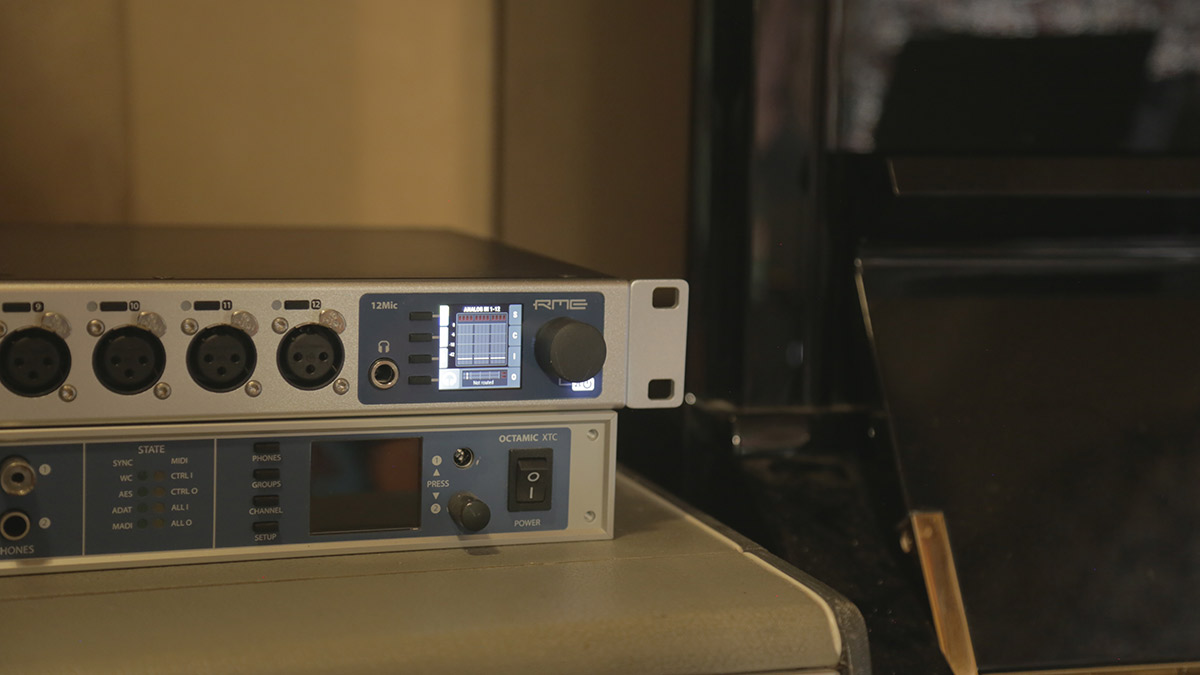 Multi-tracking live jam sessions
Multi-tracking live jam sessions
The synergy of a live performance can be notoriously difficult to capture in a traditional multi-tracked studio. Having experienced a noticeably different vibe with the booth-style rooms in New York, Strange Pill felt compelled to try and recreate this environment back in their home studio in London.
“Probably the biggest compliment so far is seeing how people relax, and forget that really they’re in a recording studio,” continues Ben. “For example, we had a band in recording the other day, and the drummer said his sticks were damaged and he needed a new pair. And the guitarist said no problem I’ll pass you some, and he went to the door thinking he could just pass them to the next room. And it took him a second to realise that the drummer was all the way out in the shed, at the back of the garden.”
“So it just has that feeling of a jam session, and it really seems to create something unique. You have that live element and yet you have that ability to mix properly, with proper separation. So seeing that in action, that’s been very exciting.”
“Usually when you record in a studio, of course it’s a fantastic experience,” notes Zahara. “But when you listen back, everyone is looking at this screen and these waveforms. Which seems such a strange way to listen to a song – why not actually see the performers as you are listening to the music? I think it’s beautiful. The moment you start having all of the visual narratives incorporated into the experience of music, you’re entering further layers of experience.”
“Audio is extraordinary, you can enter many worlds. But then to be able to also see what is happening visually with the performer, during the moment it’s recorded? I think this has a character of its own, and which you lose if you are only capturing the sound.”
“So what we’re capturing here is the band fully in the moment, and which any other bands who record here can watch back and witness as well, or their fans online.”
“It’s also a very hands-on mixing experience – because you can see everyone playing visually. Usually when you’re producing music, you’re using your ears going ‘that drum needs to go up, that guitar is too loud’. But because here you can see the performance of each musician, it can actually influence how you mix as well, because you can see the way each performer is acting as they play. It’s all part of the experience.”
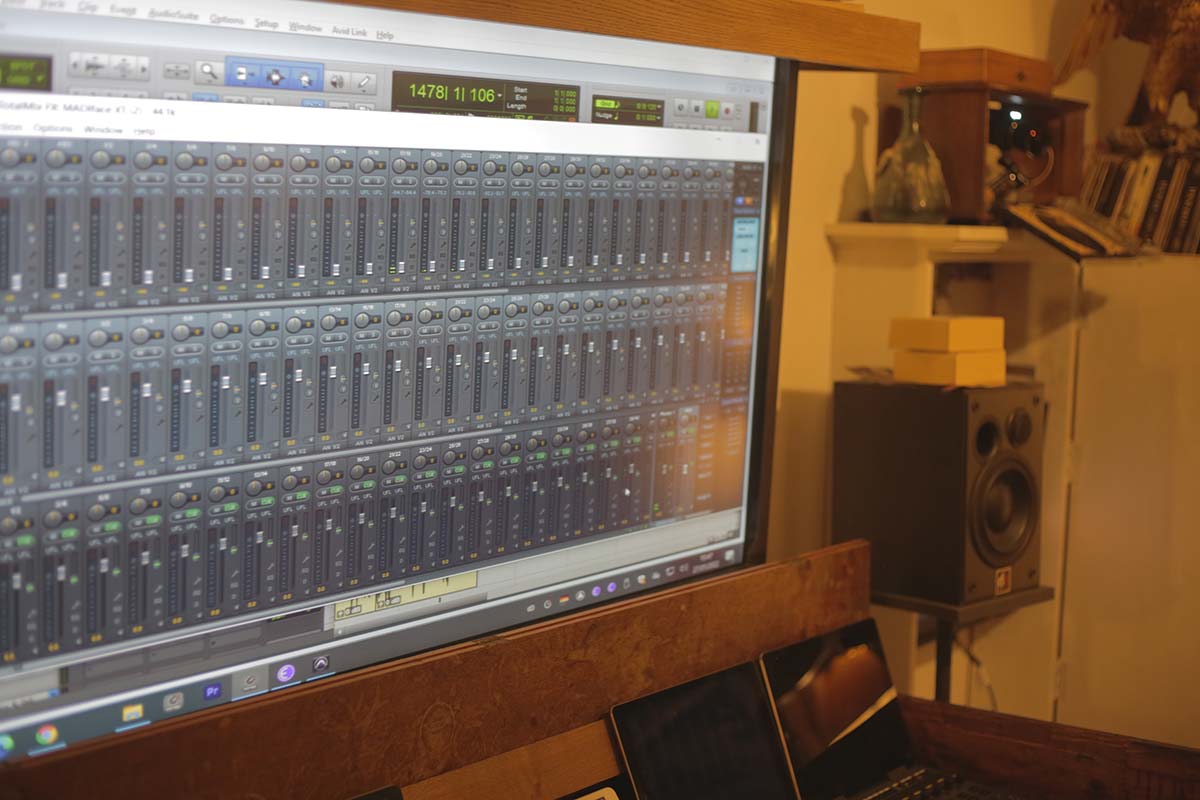 On the gear – RME 12Mic and MADIface XT
On the gear – RME 12Mic and MADIface XT
After speaking with a number of “leading audio and video companies” about the project, Strange Pill settled on a MADI-based recording setup, and a selection of gear from RME and Ferrofish.
“The studio is made up of a combination of analogue and very cutting-edge equipment, because we want it warm, but at the same time really high-quality. And of course it has to be really reliable,” Ben tells us.
“So we started experimenting with different gear, but the RME gear has become a staple for us in our work. It’s saved us really, and just has allowed us to do everything we’ve wanted to do. We spoke to a number of different suppliers, including Synthax UK’s MD Martin Warr, and to be honest he was leagues ahead of everyone else, in the way that he spoke and his understanding. And he really just got what we were trying to do from the start.”
“So that really cemented our decision to go with RME, and we now have an RME MADIface XT as our main interface. In terms of mic pres we have four OctaMic XTCs, as well as the latest one, the RME 12Mic, which is a fantastic new offering. It also has the inputs on the front, which is perfect for our live room, and allows us to just swap all the inputs around whenever we need to, we don’t need a patchbay or anything.”
“Everything is connected via MADI optical, which is pretty much zero latency, and which of course is what we need with the displays and everything. And the great thing about MADI is that you can hook everything up in series with these little optical cables, and once you turn on all the machines everything just works. It’s that simple.”
“And then you can have this easy remote control as well down the same cable, for controlling your levels. And the sound quality from RME is quite simply amazing, really really good.”
“RME’s preamps, it was a game-changer for us. I mean the floor level – it’s allowed us to work at different levels in a way we couldn’t before, and with a lot less hiss. They say you can hear your heartbeat in a vacuum, and you hear this different kind of silence when you’re recording with RME’s preamps, all of them. They’ve got such a big dynamic range, and it’s so clear. There was no looking back for after we’d used them.”
“RME gear has become a staple for us in our work.”
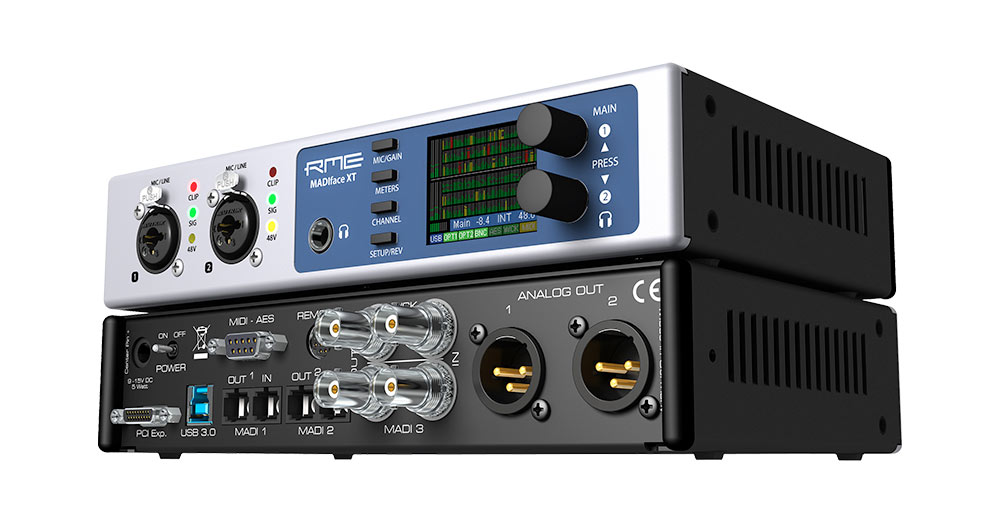 “MADI is so easy to work with,” says Zahara. “This would have been impossible with old-fashioned audio cabling. Not only the amount of cabling we’d need to run all around the house, but problems with latency too. The moment you go beyond 15m you start getting problems, so for us to be connected from the mixing room here at the front of the house, then all throughout the house, and on to the live room at the back of the garden, it’s been revolutionary really.”
“MADI is so easy to work with,” says Zahara. “This would have been impossible with old-fashioned audio cabling. Not only the amount of cabling we’d need to run all around the house, but problems with latency too. The moment you go beyond 15m you start getting problems, so for us to be connected from the mixing room here at the front of the house, then all throughout the house, and on to the live room at the back of the garden, it’s been revolutionary really.”
“And as Ben said, Martin at Synthax UK has been absolutely wonderful throughout, with his knowledge and guidance.”
On RME TotalMix FX
“When TotalMix first came along I thought it looked like a lot to take on and learn,” says Ben, when asked about RME’s software mixing controller. “But the more you learn with TotalMix, and the more you use it, you quickly realise how brilliant it is. It’s a patchbay, you’ve got the effects, you can store and save your parameters, all in this one screen here. It’s really like a massive desk in one. And you can use it remotely!”
“It’s really helped our workflow, especially with all the inputs we have and needing to be on the ball all of the time. We use it for setting up all of the headphone mixes, adding effects to the monitoring, and for controlling all the different feeds and levels. Yeah it’s been really useful, it’s just really good for all of that.”
On the Ferrofish Pulse 16 MX
Along with their RME audio interface and microphone preamps, Strange Pill’s studio also features a Ferrofish Pulse 16 MX, a 16 I/O AD/DA converter that Synthax UK regularly specs alongside RME.
“We realised we needed a lot more inputs in the control room”, says Ben on the subject of Ferrofish. “We were looking for something that wasn’t too expensive, but also had MADI, and would be as reliable as all of the RME gear we have here.”
“And you guys at Synthax recommended the Ferrofish to us, and I’ve been really impressed with it, and quite surprised by it actually. We’re using it again like a little patchbay, and the user interface on it is just great, very easy to get your head around it. You can change everything really quickly from the front panel, as well as remotely via MIDI.”
“And the sound is fantastic again. Very little noise on the inputs, and really reliable as well. Not really that expensive in my opinion either for what you get, and very easy to use if you need to mix quickly on the fly. Just a really cost-effective solution for a lot of extra channels.”
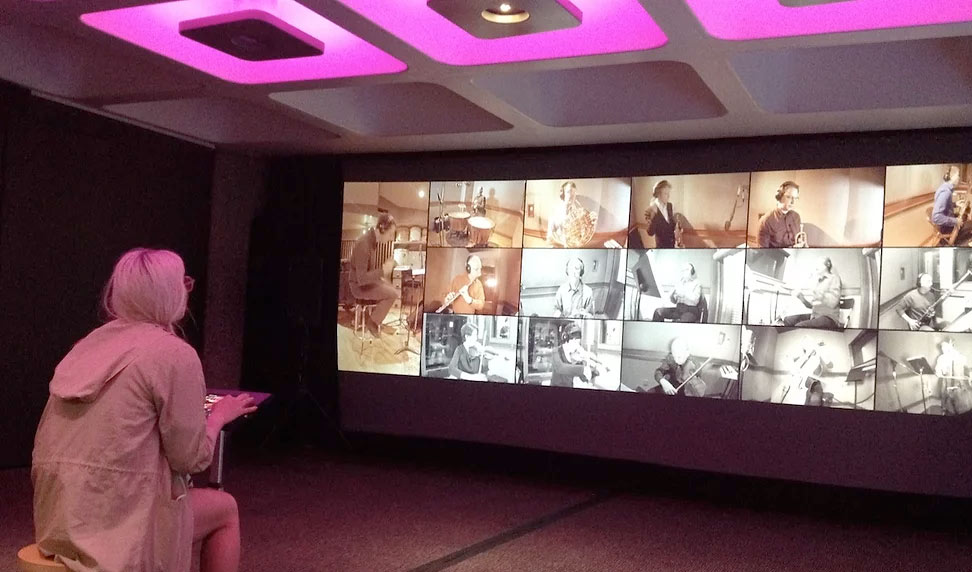 What’s next for Strange Pill?
What’s next for Strange Pill?
Having now completed the Mashroom Studio, we asked Strange Pill what’s next for them.
“The idea is that we’re going to create a new music platform, an ecosystem where people can record, experiment, perform live together, and create proper quality recordings,” says Ben. “Each recording can then be shared online and will be interactive, with fans being able to listen to each performer solo’d, as well as to see video of the performance. Imagine being able to go back to Abbey Road or any other iconic studio, and be able to access all of this information about each artist and the recording methods, and hear and see all of the musicians in isolation.”
“We work with many different fantastic musicians, so we want this space to not just be somewhere with really great kit, but somewhere that captures the full story behind a recorded performance, and with some really exciting music coming out of it.”
“All of which is then documented and accessible for anyone online. So we’re currently creating a platform that will allow us to incorporate longer pieces of music and video, so people can mix together both audio and visuals, and create new pieces from all of the material recorded here.”
“You enter a relationship when you work with other musicians,” says Zahara. “It feels like a family, even if it’s just for a moment. So we’re just really looking forward to having all these people come and record, and share in amazing experiences. We actually had a guitarist in recently, who said the sound we’d captured here was his favourite! Despite it being first and foremost our home, and not being a perfect acoustically-treated space. And that was such a compliment to hear, that he loved the character of the space.”
“We see our house as a collage. Everything we do is a collage, it’s how we create. Music is a collage. The equipment is a collage, whether it’s digital, analogue or acoustic. And so is our recording space, it’s all part of the journey.”
Our thanks to Strange Pill. To find out more about their work, visit the Strange Pill website here.
Find out more about the RME 12Mic microphone preamp
Find out more about the Ferrofish Pulse 16 MX




















